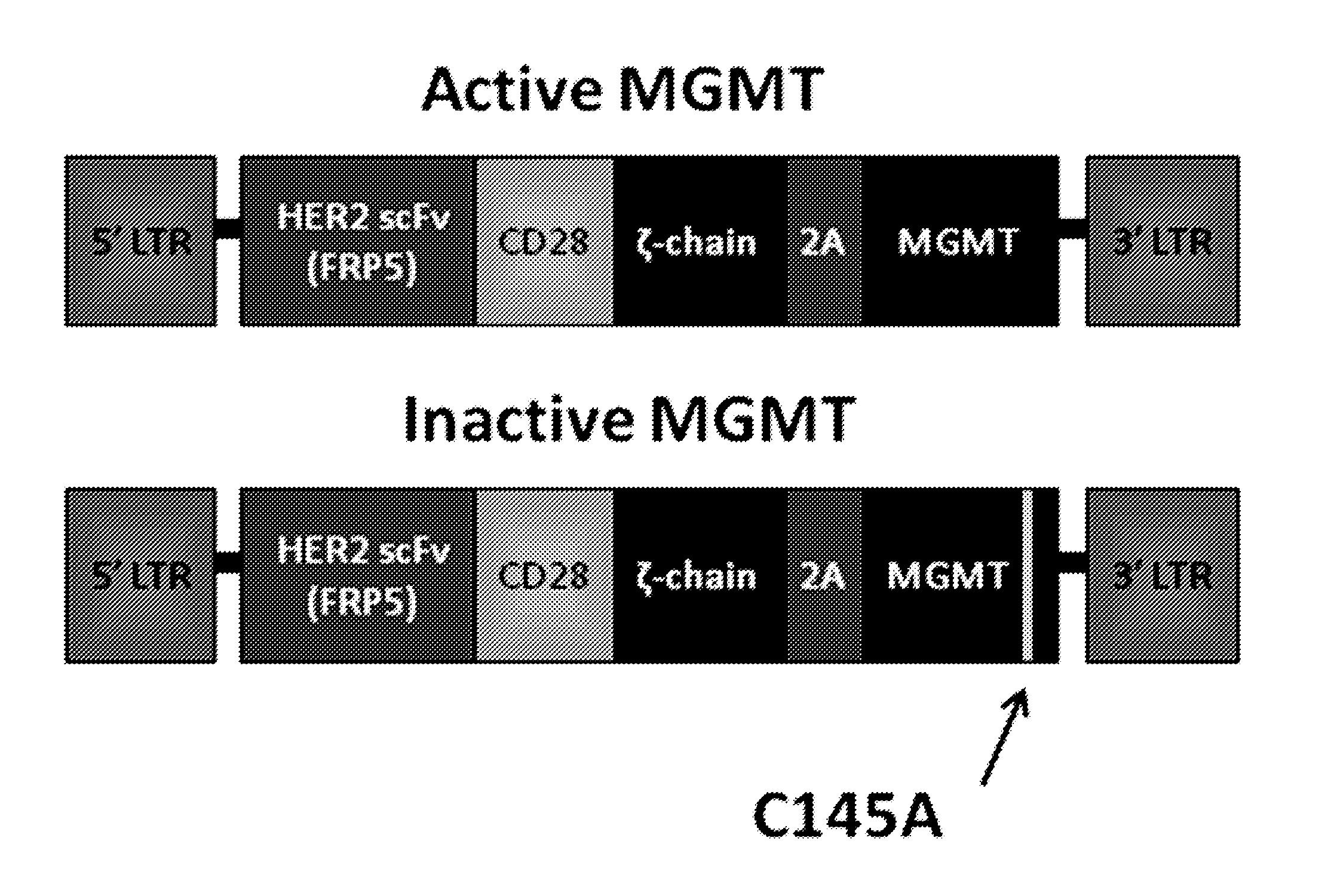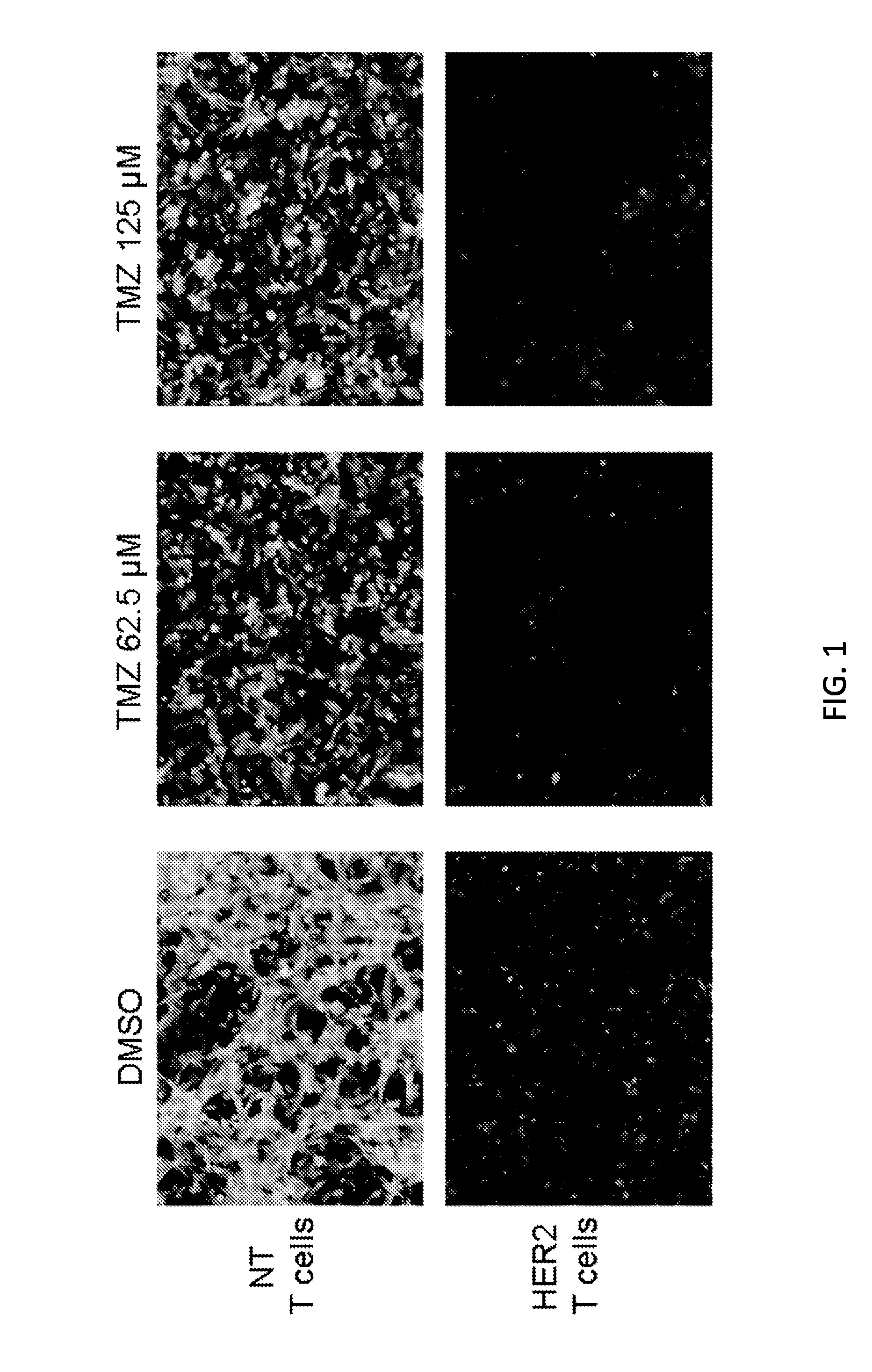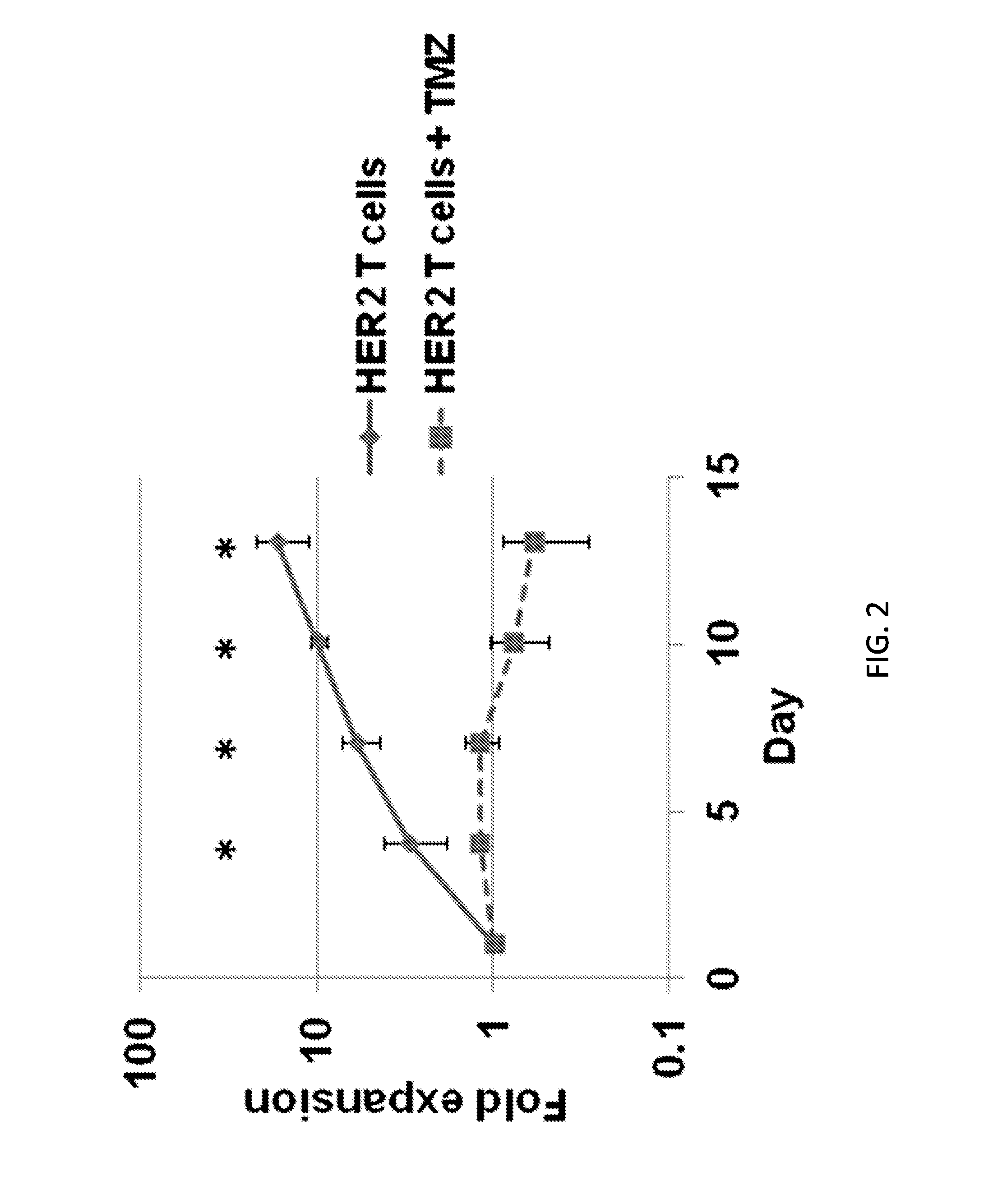Chemotherapy-resistant immune cells
a technology of immune cells and chemotherapy, applied in the field of immunology, cell biology, molecular biology, medicine, can solve the problems of reducing the effect of immunotherapy, affecting and affecting the survival rate of patients, so as to achieve the effect of reducing the effectiveness of immunotherapy
- Summary
- Abstract
- Description
- Claims
- Application Information
AI Technical Summary
Benefits of technology
Problems solved by technology
Method used
Image
Examples
example 1
Combining TMZ with HER2.CAR T Cells Leads to Enhanced Tumor Killing
[0191]Both TMZ and HER2.CAR T cells have anti-GBM activity on their own; however, it is unknown whether combining the agents provides additional benefit. To test this, U373.eGFP.FFLuc cells were co-cultured with either non-transduced (NT) or HER2.CAR T cells with or without TMZ at an effector-to-target ratio that resulted in incomplete tumor killing by the T cells alone. NT-T cells in the absence of TMZ had no antitumor activity (FIG. 1). HER2.CAR T cells had limited antitumor activity in the absence of TMZ, similar to TMZ with NT-T cells. However, the groups receiving both TMZ and HER2.CAR T cells showed complete tumor killing, indicating that chemoimmunotherapy for GBM is beneficial (FIG. 1).
example 2
Inhibits T-Cell Expansion
[0192]While it was shown that combining TMZ with HER2.CAR T cells can enhance tumor cell killing, it was desired to determine the effect of TMZ on the T cells themselves, specifically the effect of TMZ on T-cell expansion. To do this, 1×106 HER2.CAR T cells were plated with 100 U / ml of IL-2 and treated with 100 μM TMZ (day 1). Every three days, the T cells were counted, given fresh IL-2, and re-treated with TMZ. While HER2.CAR T cells expanded in the absence of TMZ, treatment with TMZ effectively prevented T-cell expansion in vitro (FIG. 2; p<0.05). This effect may limit the efficacy of T cells adoptively transferred during TMZ therapy, thus providing the rationale for generating HER2.CAR T cells that are TMZ-resistant.
example 3
Generating TMZ-Resistant HER2.CAR T Cells
[0193]MGMT was cloned into an SFG retroviral vector with a second generation HER2.CAR containing CD28 and CD3-ζ signaling domains (FIG. 3). The two genes were linked by a 2A sequence that allows for the generation of two separate protein products from one vector. This HER2.MGMT construct was used to generate T cells that expressed both the HER2.CAR and functional MGMT protein (HER2.MGMT T cells). A second construct containing a cysteine to alanine amino acid substitution in the MGMT sequence, which has been shown to render the protein inactive, was used to generate control T cells that express the HER2.CAR, and nonfunctional MGMT protein (HER2.MGMTCA T cells; FIG. 3). RD114-pseudotyped retroviral particles encoding these constructs were used to transduce CD3 / CD28 activated T cells from normal healthy donors. FACS analysis was used to determine the cell surface expression of the HER2.CAR, while quantitative RT-PCR was used to determine MGMT mR...
PUM
 Login to View More
Login to View More Abstract
Description
Claims
Application Information
 Login to View More
Login to View More - R&D
- Intellectual Property
- Life Sciences
- Materials
- Tech Scout
- Unparalleled Data Quality
- Higher Quality Content
- 60% Fewer Hallucinations
Browse by: Latest US Patents, China's latest patents, Technical Efficacy Thesaurus, Application Domain, Technology Topic, Popular Technical Reports.
© 2025 PatSnap. All rights reserved.Legal|Privacy policy|Modern Slavery Act Transparency Statement|Sitemap|About US| Contact US: help@patsnap.com



